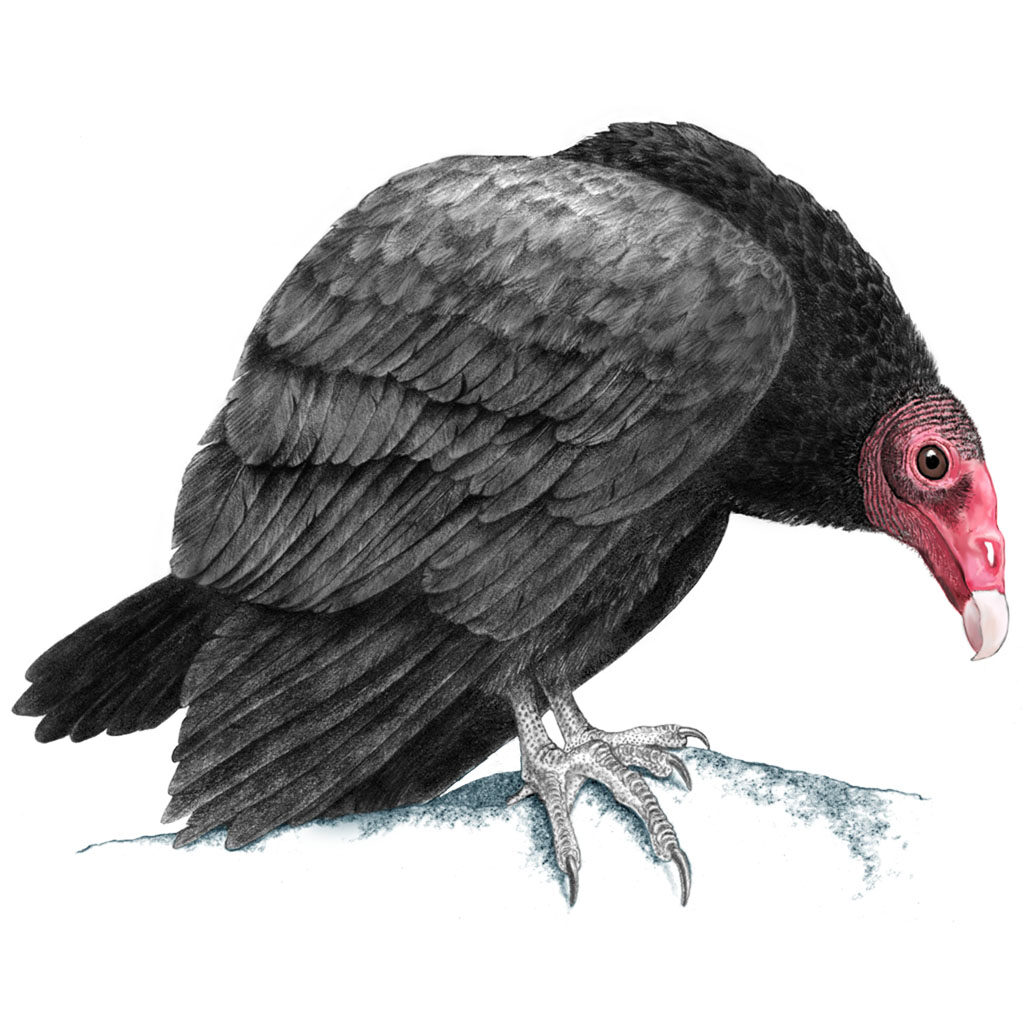Turkey Vulture

The turkey vulture, with bright red, featherless head, often hangs around with black vultures, which have warty black heads and shorter tails. In flight, the turkey vulture has a distinctly longer tail. Their habits are similar.
A turkey vulture has weak claws and beak that can’t kill or efficiently tear apart fresh meat, so it spends a lot of time soaring through the sky examining the earth below for dead animals that have reached a soft enough stage for it to eat. Without the turkey vulture, the world would be a much messier, smellier place, and it might also be more dangerous, because a vulture, with stomach acids about ten times as strong as a human’s can eat really mean microbes that could spread if not kept in check by vultures.
The turkey vulture is a big bird with a six-foot wingspread. It is most often seen (by humans, at least) around roads, since that’s a good place to find something dead and that’s where people can easily see them. If you’re traveling in the early morning, right after sunrise on a sunny day, you may also see a group of them perched on dead trees, wings spread, warming up in the sunshine before taking to the skies. Their preferred habitat is open country with nearby woods for nesting. There’s an interesting video about turkey vultures here.
I once helped feed rescued baby vultures at a wildlife rehab center. It was quite an experience to hold a ball of raw meat in my fist with a slight opening between my knuckles. The baby vultures would poke their beaks into the opening to pull out the food, just as they would poke their head into mom vulture’s craw to pull out food she regurgitates for them. Their featherless heads were smooth, soft and warm. The image shown here is of one of those babies all grown up, shortly before release.
Turkey vultures range from Canada to South America. A subspecies found in the western US, migrates in winter, rising on warm thermal plumes to form “pods” of 20 to 30 birds which travel together to warmer climes (vultures apparently aren’t fond of “frozen entrees”). Local turkey vultures live in Belize year-round, but are probably joined in winter by northern vultures. Turkey vultures hiss and grunt, but have no other call. More info here.